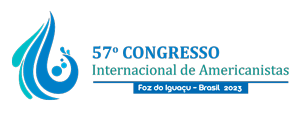| Dados do autor | |
|---|---|
| Sua instituição | East Carolina University |
| País de origem do autor | Estados Unidos |
| Dados co-autor(es) [Máximo de 2 co-autores] | |
| Sua titulação | Pós-Doutorado |
| Proposta de Paper | |
| Área Temática | 02. Arqueologia |
| Grupo Temático | Arqueologia Inka |
| Título | STRATEGIES OF MAPPING INKA IMPERIAL LANDSCAPES WITH HORIZON MARKERS: FROM THE HEARTLAND TO CHINCHAYSUYU AND KOLLASUYU |
| Resumo | This paper will analyze case studies of Inka horizon astronomy in which an observation point in the form of a natural or architectural stone wak’a was used to track sunrises and sunsets on the horizon line by means of architectural towers or stone monoliths. The central case scenario is in the heart of Cusco: Spanish writers describe how the Inka followed the movements of the sun through sets of horizon towers from the ushnu in the main plaza. While none of the Cusco towers has been archaeologically documented, two horizon towers have been reconstructed in the Urubamba Valley in relation to an observation point in Wayna Qhapaq’s estate at Quispiguanca. I report fieldwork from Machu Picchu during which an observation station between the Intiwatana and the Cerro San Miguel ridge to the west was investigated. In outlying regions, horizon towers have been recorded on the Island of the Sun in Kollasuyu as well as in Chinchaysuyu at the Early Horizon site of Chankillo. The latter is of particular interest as Ivan Ghezzi excavated an Inka figurine next to a solstice tower. |
| Palavras-chave | |
| Palavras-chave |
|
